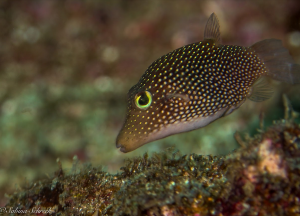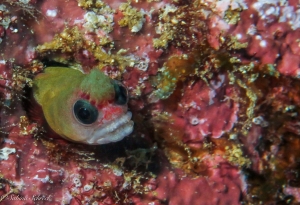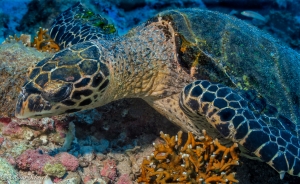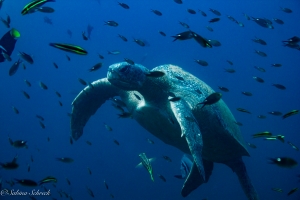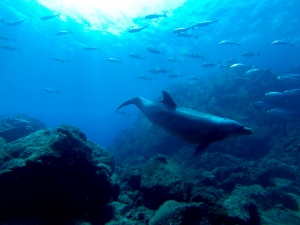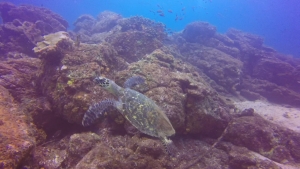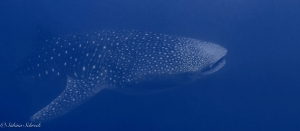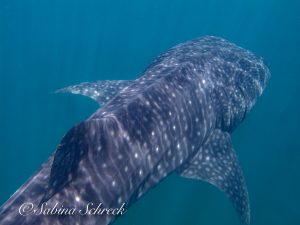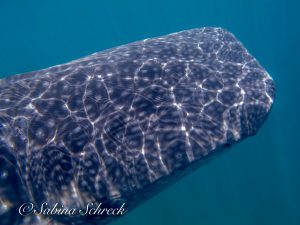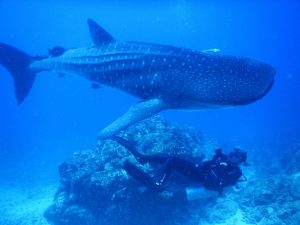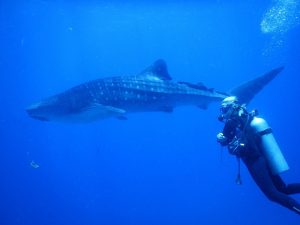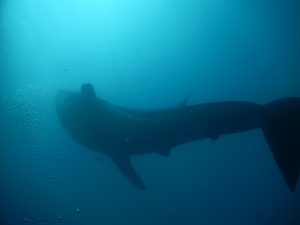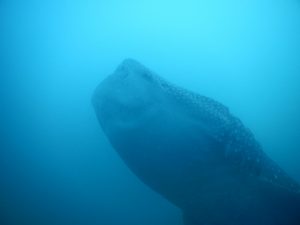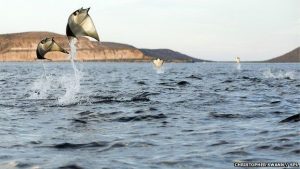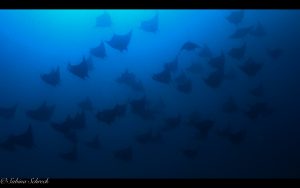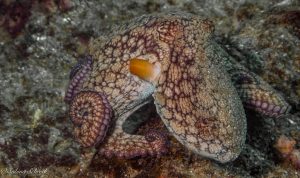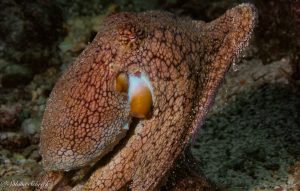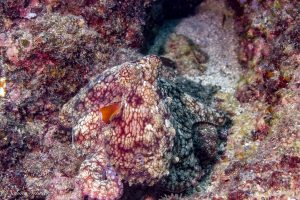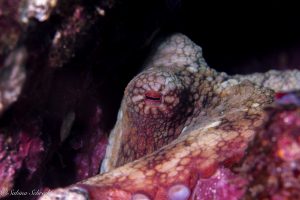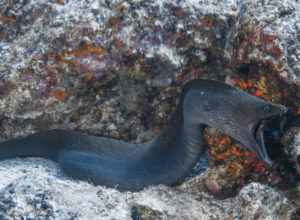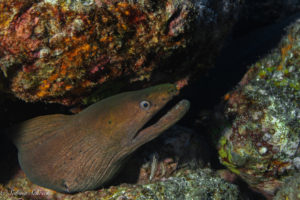Humpback whales are easily recognized because of their enormous size, their majestic whale songs and their stunning aerial acrobatics, often breaching the water despite their large bodies and landing with a tremendous splash. A fully grown humpback whale weighs more than 5 adult elephants and measures up to almost 20 meters in length, the size of a big bus. Humpbacks possess a massive tail fin called fluke and unusually long pectoral fins (1/3 the length of their body!), which they use for navigation through the world’s oceans. The only known predator of such huge animal is a pack of very hungry killer whales.
Humpbacks have a very diverse diet consisting of krill, plankton and small fish such as salmon, herring and mackerel. Humpbacks do not have teeth but baleen plates, with bristles attached to them that prevent small prey from escaping but allow water to easily pass through. Since they don’t have teeth they have to swallow their preys entirely. The way they hunt is a real spectacle. They use a technique known as bubble net fishing. This involves a group of humpback whales swimming around their prey in a circle, blowing bubbles around their prey in order to herd the fish into a tight ball and creating loud vocal sounds to scare the fish to the surface of the water. Then, the humpbacks slap their fins against 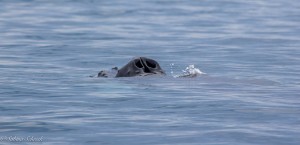 the water to stun the fish and immobilize them. Finally, the whales will swim up with an open mouth and engulf thousands of small fish in just a single gulp, using their baleen bristles to separate water and debris from prey and their tongue to push the water out of the mouth and to swallow their prey.
the water to stun the fish and immobilize them. Finally, the whales will swim up with an open mouth and engulf thousands of small fish in just a single gulp, using their baleen bristles to separate water and debris from prey and their tongue to push the water out of the mouth and to swallow their prey.
Humpback whales feed mostly during the summer feeding season, building up blubber (fat) reserves that they will use during their migration and mating season. They make huge annual migrations from summer feeding grounds near the poles such as Alaska and Antarctica, where they enjoy cold nutrient-rich waters, to warmer winter breeding waters near the Equator where they mate and bear offspring. This means that the visiting humpback whales that we can see in Coiba have travelled thousands of miles all the way from Antarctica, making this the farthest migration of any mammal! Moreover, during this long migration and their time in Coiba, they will be fasting, hardly feeding and living primarily off of the blubber reserves acquired during the feeding season! Their time in Coiba is mating season so here they either breed or, in the case of pregnant females, they give birth. Females produce a single offspring once every 2-3 years. The average gestation period is 11-12 months. This means that a female humpback in Coiba will get pregnant one year and then migrate back to the South Pole while pregnant. Once there it will be feeding for a few months and will then migrate thousands of miles still pregnant and fasting back to the safer warm waters of Coiba, to give birth to her only calf! The mother will nurse the calf for about a year, with calves drinking up to 600 L of her mother’ s milk in just one day! A calf will continue growing until approximately the age of 10, when they reach full adult maturity.
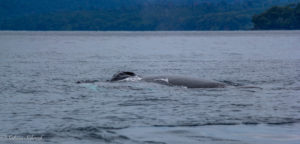 A humpback’s song is beautiful, unique and can last for a long time. Imagine that you are underwater and all of a sudden you start to hear a very complex and loud mixture of low-pitched moans, whines and howls. You look around trying to find the source. The sound wraps around you but you cannot see where it comes from, and you know this orchestra is the work of one of these huge fellows which is perhaps a few miles away from you, since their magical songs can travel for great distances through the ocean. Can you imagine it? Believe me, it is a truly unforgettable experience. And it is even more amazing given the fact that humpbacks do not have vocal cords and are unable to breath through their mouth, so all their sounds are produced by pushing air out of their blowhole. The songs are still surrounded by mystery. We still don’t understand the impressive humpback’s ability to produce songs of such complexity, and we are not certain of the purposes behind them. Typically one population of male humpback whales will sing a variation of the same song. Because whale songs are sung exclusively by males, it is believed that the song could be a mechanism for mating used by males to show off their vocal abilities and appeal to females. If this is correct and you have the chance to hear a whale song, think you are listening to one of the most complex acoustic mating rituals in the animal kingdom. However, female humpbacks have very rarely been recorded approaching a singing male whale and male humpbacks do not exclusively sing during mating season. Therefore, some scientists believe that there has to be another purpose behind their songs. Perhaps songs act as synchronizing symphonies guiding the migration of groups of whales. We simply don’t know.
A humpback’s song is beautiful, unique and can last for a long time. Imagine that you are underwater and all of a sudden you start to hear a very complex and loud mixture of low-pitched moans, whines and howls. You look around trying to find the source. The sound wraps around you but you cannot see where it comes from, and you know this orchestra is the work of one of these huge fellows which is perhaps a few miles away from you, since their magical songs can travel for great distances through the ocean. Can you imagine it? Believe me, it is a truly unforgettable experience. And it is even more amazing given the fact that humpbacks do not have vocal cords and are unable to breath through their mouth, so all their sounds are produced by pushing air out of their blowhole. The songs are still surrounded by mystery. We still don’t understand the impressive humpback’s ability to produce songs of such complexity, and we are not certain of the purposes behind them. Typically one population of male humpback whales will sing a variation of the same song. Because whale songs are sung exclusively by males, it is believed that the song could be a mechanism for mating used by males to show off their vocal abilities and appeal to females. If this is correct and you have the chance to hear a whale song, think you are listening to one of the most complex acoustic mating rituals in the animal kingdom. However, female humpbacks have very rarely been recorded approaching a singing male whale and male humpbacks do not exclusively sing during mating season. Therefore, some scientists believe that there has to be another purpose behind their songs. Perhaps songs act as synchronizing symphonies guiding the migration of groups of whales. We simply don’t know.
At one point these amazing creatures were considered highly endangered due to excessive hunting and commercial whaling. Since then they have made a huge comeback thanks to protecting laws and a general increase in environmental awareness among the public. Most populations today and are no longer considered a concern from a conservation standpoint. However, they still face a number of threats from humans such as entanglement in fishing gear, harassment by whale watchers, boat collisions, overfishing that compromises their feeding grounds, and water and noise pollution as well as other environmental impacts on their habitat. Entanglement in fishing gear and other marine debris is known to occur during long migrations. Shipping channels and coastal developments may displace whales, discouraging them from breeding in an area that they would normally use. The population migrating in Central America is among the populations still at risk. Do not be discouraged, a lot is being done to improve their situation. I only ask you, if you want to see whales, wherever that may be, make sure you look for responsible operations that follow adequate guidelines for whale watching.
-By Rodrigo Villarino

